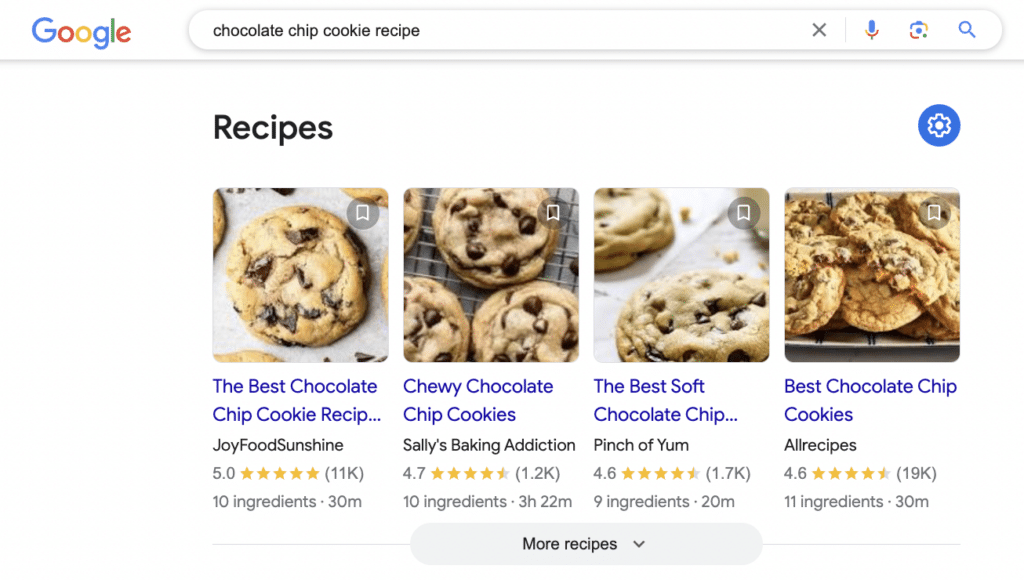You’ve just hit “publish” on your latest blog post, after putting in lots of precious time crafting a masterpiece. It’s got everything – a catchy title, engaging visuals, and content so valuable it could be sold as a rare gem. But as the hours turn into days, your traffic remains stagnant, leaving you wondering where all your readers are.
Sound familiar? The truth is, creating top-notch content is only half the battle. To truly captivate your audience and keep them coming back for more, you need to look past the words on the page and the cross-channel promotion. Enter: on-page optimizations. With some simple adjustments to your page’s structure, content, and SEO elements, you can get your blog the attention it deserves.
But on-page optimization goes beyond just tweaking a few keywords or throwing in some meta tags. It’s a holistic approach that takes into account every aspect of your blog, from your content structure to your site navigation and beyond. And when done right, it can have a meteoric impact on the growth of your readership.
Give your content a tune-up:
Before you start optimizing your blog, take a closer look at your existing content. A content audit will help you identify areas for improvement and ensure your blog is always fresh and engaging.
- Content checkup: Analyze your blog posts for any content that’s outdated, irrelevant, or underperforming. Take the opportunity to give any out-of-date content a refresh to pull in new interest.
- Out with the old: Based on your content audit, archive any posts that aren’t serving your audience anymore. This will eliminate unnecessary distractions on your blog feed.
- Mind the gaps: Identify any gaps in your content coverage and brainstorm new blog post ideas to fill those voids.
Spruce up your meta tags:
Meta tags help search engines understand and classify your blog content. By optimizing them, you can improve your blog’s visibility and attract more readers.
- Title & description: Craft compelling meta titles and descriptions that accurately represent your content and entice readers to click through from search results. Try to naturally incorporate relevant keywords.
- Limit your characters: Keep meta titles under 60 characters and meta descriptions under 155 characters to ensure they display correctly in search results.
Featured snippets:
Featured snippets appear at the top of Google’s search results, providing quick answers to user queries. Optimizing your content for featured snippets can significantly boost your blog’s visibility by turning the spotlight on your blog post’s most enticing information .
- Answer questions: Structure your content to clearly and concisely answer common questions related to your topic.
- Header tags: Use header tags (H1, H2, etc.) to organize your content into easily digestible sections.
- Structured data: Incorporate lists, tables, and other structured data formats to make it easier for search engines to feature your content.

Schema markup:
Just like when you search a recipe and see the rating and number of ingredients, or when you search for shoes and see the material, schema markup is a code that helps search engines better understand the context and content of your blog posts. By implementing schema markup, you can increase your chances of appearing in rich snippets, which display additional information about your content in search results, giving quick and easy previews that entice users to click.
- Provide context: Use schema markup to provide search engines with details about your blog posts, such as author information (using the Schema.org “Person” or “Organization” types), publication dates (“datePublished”), ratings (“aggregateRating”), and more. Other relevant schema types for blog posts include “BlogPosting”, “Article”, and “WebPage”. For more information on all things schema markup, check out Schema.org.
- Rich snippets: Properly implemented schema markup can help your blog posts appear in rich snippets, which can include star ratings, review counts, and other eye-catching details.

Internal linking:
Internal linking is the practice of adding links to other relevant content within your blog. By strategically linking related posts, you can keep readers engaged, improve your site’s structure, and help search engines better understand your content.
- Relevant links: When mentioning a topic you’ve covered in another blog post, link to it to provide additional value to your readers and encourage them to explore more of your content. The deeper visitors go into your website, the more likely they are to remember you (and come back for more).
- Descriptive anchor text: Use descriptive anchor text for your internal links to give search engines a clear idea of what the linked content is about. For example, instead of using generic phrases like “click here” or “read more”, use specific, keyword-rich phrases that describe the content you’re linking to, such as “learn more about on-page SEO techniques” or “discover the benefits of content audits”.
- Related posts: Include a “related posts” section at the end of each blog post to suggest the perfect follow-up content your readers might enjoy.
Navigation:
A good navigation strategy means that readers can find the content they’re looking for easily. Creating an intuitive and user-friendly navigation system will encourage readers to adventure further into your blog.
- Clear structure: Create a menu with clear, logical categories that guide readers to the content they’re looking for as smoothly as possible.
- Breadcrumbs: Implement breadcrumbs to show readers their current location within your blog’s hierarchy and allow them to easily navigate back to previous pages. Breadcrumbs typically appear as a horizontal list of links at the top of a webpage, indicating the path from the homepage to the current page, such as “Home > Blog > Category > Post Title”.
- Search functionality: Include a search function that enables readers to find specific content based on keywords or topics.
- Categories & tags: Organize your blog posts into relevant categories and tags to help readers discover related content. Bonus: categories and tags can also seriously boost your search rankings.

Source: HubSpot Blog
Voice search optimization:
With the growing popularity of voice assistants like Siri and Alexa, optimizing your blog for voice search is becoming a non-negotiable. In fact, over half of adults across the globe report using voice search every day. By structuring your content to answer common questions in a conversational tone, you can improve your chances of getting a leg-up in voice search results.
- Long-tail keywords: Use long-tail keywords and conversational language that mimics how people naturally speak when using voice search.
- Q&A format: Structure your content in a question-and-answer format, providing clear and concise answers to common questions related to your topic. For example, if you’re writing about summer nail trends in 2024 you might include a section titled “What are the top nail trends in the summer of 2024?” followed by a brief, direct answer: “The top nail trends of summer 2024 are chrome, pastel french, and florals.” That way, people talking to their voice assistant like they would to another person get an easy, conversational answer from your blog.
Page speed optimization:
With 40% of users abandoning a site that takes more than three seconds to load, it’s clear that page speed is a crucial factor in user experience and search engine rankings. By optimizing your blog for faster loading times, you can improve reader engagement and reduce bounce rates.
- Image optimization: Compress images to reduce file sizes without sacrificing quality.
- Browser caching: Enable browser caching to allow repeat visitors to load your site faster by storing certain files locally.
- Minify files: Minify your CSS, JavaScript, and HTML files to reduce their size and improve loading times. Minification removes unnecessary characters (such as whitespace, comments, and formatting) from your code files, resulting in smaller file sizes that load faster in browsers. Tools like UglifyJS (for JavaScript), clean-css (for CSS), and HTMLMinifier (for HTML) can help streamline the minification process.
- Content delivery network (CDN): Consider using a CDN to serve your content from servers closer to your users, reducing loading times for visitors from different geographic locations.
Accessibility:
By taking measures to keep your page accessible, you help to ensure that your blog can be enjoyed by all users. By following accessibility guidelines, you can create an inclusive experience that leaves no reader behind.
- WCAG compliance: Follow the Web Content Accessibility Guidelines (WCAG) to ensure your blog is accessible to users with disabilities. The key principles of WCAG include making your content perceivable (by providing text alternatives for non-text content), operable (by making all functionality available from a keyboard), understandable (by using clear and concise language), and robust (by maximizing compatibility with assistive technologies).
- Alt text & transcripts: Use alt text to describe images and provide transcripts for videos, making your content accessible to users with visual or hearing impairments.
- Color & contrast: Ditch tone-on-tone text and overly-ornate fonts. Choose color schemes and typeface that provide sufficient contrast and are easy to read.
Visual appeal:
Finally, don’t underestimate the importance of visual appeal in keeping readers engaged with your blog. By using eye-catching formatting and incorporating visuals, you can grab attention and keep hold of it.
- Break up text: Use subheadings, bullet points, and numbered lists to break up long paragraphs and improve readability.
- Incorporate visuals: Include relevant, high-quality images and videos to make your content more engaging and visually appealing.
- Formatting: Use bold and italic text to emphasize key points and make your content easier to scan. Bold text is best used for highlighting important terms, phrases, or concepts, while italic text is often used for emphasis or quotes. Just be sure to use these formatting options sparingly to maintain their impact and avoid overwhelming your readers.
- Reading time & progress indicators: Add estimated reading times and progress bars to give readers an idea of how long it will take to read your content and how far along they are. This adds a dash of gamification to your post too, giving readers a sense of accomplishment when they reach the end of the post.
On-page SEO checklist

Give your blog a boost
When you start incorporating on-page optimizations, on top of your already killer blog content, you’ll be well on your way to creating a blog that readers can’t resist. From conducting a content audit to optimizing your meta tags, featured snippets, and schema markup, you’re giving your blog the opportunity to gain the traction it deserves.
Optimization isn’t a set-and-forget sort of thing. On-page optimization is an ongoing process that requires continuous experimentation, testing, and refinement to find what works best for your blog and your audience. So, roll up your sleeves and get ready to tackle optimizations one by one until your blog becomes an irresistible destination for your readers.

